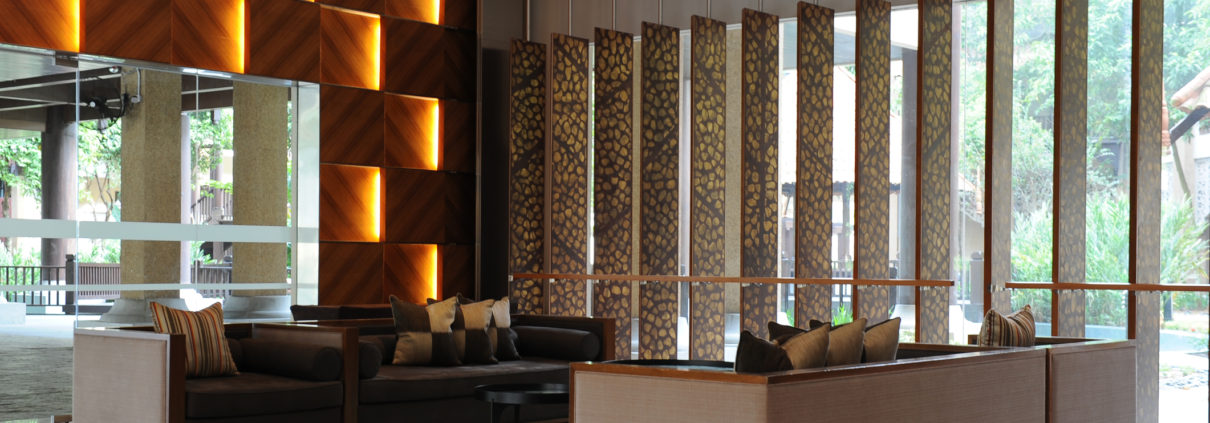Hot Flooring Trends in Hospitality Interior Design
Hot Flooring Trends in Hospitality Interior Design
Stretching broadly beyond hoteliers and lodgers, the hospitality industry encompasses an array of businesses such as retail, restaurants, day spas, cruise ships, and other businesses that cater to the leisure activities of consumers. Likewise, in these experience and service-oriented businesses, operators’ unique need for comfortable and memorable spaces is coupled with the need for durable commercial-grade flooring that will outlast years of high foot traffic.
Bridging the gap between atmosphere and endurance, hospitality flooring is commercial from a performance viewpoint, and in many situations, aesthetically residential. Tanya Campbell, the owner of Viridis Design Studio in Denver, Colorado, creates impressive spaces within the hospitality industry starting from the ground up. She notes that in today’s world, manufacturers of flooring materials recognize the need for durable, low-maintenance, and attractive flooring, and there are many “on trend” options that designers have to pull from for unique, design-forward projects.
What’s Coming for Hospitality Interior Design
In the universe of hospitality, high competition commands environments that differentiate themselves not only in service and management but also in design.
Tanya reflects that “What I see trending in hospitality design is Super Clean Monolithic Minimalism where large scale and elegant finishes make a bold impact. For example – oversized chandeliers, super high ceilings in lobbies with gold leaf on finishes paired with clean white or wood surfaces, and just a few colorful statement pieces, such as a large-scale mural or wall sculpture or oversized layered works of art. These spaces feel rich, spacious, elegant and calming. Everything is in its place.”
“Conversely, the other look that is trending is an Eclectic and Eccentric look; almost the opposite in that the space has a more cluttered appearance – many unique and interesting art finds, accessories, use of several types of wallpaper, antique and vintage assortment of light fixtures or custom fixtures that look antique. Also, the use of complementary colors that are reminiscent of certain decades or centuries. This style has a lot going on, but has something interesting and unusual to delight the observer everywhere they turn.”
Bringing design to floor-level, a multitude of materials and formats stage an environment for creating impeccable ambiance.
Types of Flooring for Hospitality Design
Large-Scale Design – Traditional tile came in 12”x 12” squares with 1/8” grout lines and was once the standard. But now, much larger and more interesting formats have appeared on the market for a more contemporary feel. Large mosaic art pieces can be created by pairing large tiles together that vary in color and polish levels, while even larger format porcelain tile offers extremely durable flooring options in modular sizes up to 5’ x 10’.
Luxury Vinyl Tile – Advancing technology has made beautiful flooring that is cumbersome to maintain, such as stained hardwood floors, an achievable option for highly trafficked floors. Luxury vinyl tile looks like wood or stone – like oak, marble, travertine, and many other natural materials – but performs with more durability and at a lower price point.
3 Dimensional Carpeting – Variations in sculptured effects and height add a level of luxury and interest that hospitality spaces demand. Different loop textures and pile cuts create distinctive styling and fashion appeal against the neutral tones that have been on trend for the last several years.
Mixed Materials – Changing the flooring material in a space creates the illusion of separation, such as on a retail floor, and may also guide customers strategically through the merchandise. In a hotel environment, varying floor designs – including wood, stone, metal, and concrete – produce a home-like feel rather than a space that looks like a casino with overall carpeting.
Acid Stained Concrete – Appealing to high-end retailers and restaurants, acid stained concrete provides a commercial flooring solution that is classic, elegant, and natural in appearance. For heavily trafficked and cleaned floors, concrete is easy to maintain and easy to transform using existing flooring reducing project costs. Stains come in a wide range of customizable colors.



